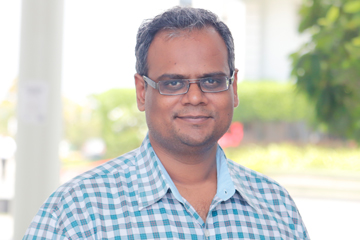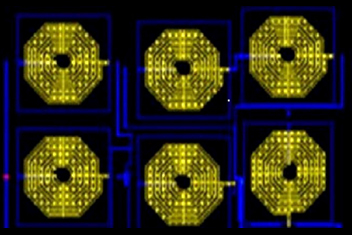 Prof Siva Sankar Y, Professor & Head, Department of Electronics and Communication Engineering, SRM University-AP, Andhra Pradesh published a research paper titled “60 GHz common gate single stage current reuse cascode LNA topology for high data rate applications” in the Journal of Electronic Materials. In the recent era, wireless communication has become essential in the lives of mankind. The data transfer rate of wireless systems varies from a few kilobits per second (kbps) to gigabits per second (Gbps), and the distance of communication supported by these technologies fluctuate from a few meters to kilometers.
Prof Siva Sankar Y, Professor & Head, Department of Electronics and Communication Engineering, SRM University-AP, Andhra Pradesh published a research paper titled “60 GHz common gate single stage current reuse cascode LNA topology for high data rate applications” in the Journal of Electronic Materials. In the recent era, wireless communication has become essential in the lives of mankind. The data transfer rate of wireless systems varies from a few kilobits per second (kbps) to gigabits per second (Gbps), and the distance of communication supported by these technologies fluctuate from a few meters to kilometers.
Gbps transmission entails the transfer of huge data between different devices such as high-definition (HD) video cameras, smartphones, HD set-top boxes, HD DVD players, and high-definition printers. Realizing Gpbs transmission requires operating frequency of several tens of GHz to hundreds of GHz. To meet the escalating demand for high data transfer rates, wireless technologies are penetrating the millimeter wave technology domain, which supports transmission data rates up to Gbps within small distances.
 Layout of the proposed circuitMillimeter (mm) wave spectrum can be used for such high-speed wireless communication. Dr Siva Sankar informs, “One of the major challenges in realizing mm wave based transceivers is the design of the CMOS analog RF components. In the design of CMOS RF components, power dissipation, and speed are the two important and conflicting factors that lay stringent requirements on RF design. In our work, RF component design has been used in mmWave transceivers.”
Layout of the proposed circuitMillimeter (mm) wave spectrum can be used for such high-speed wireless communication. Dr Siva Sankar informs, “One of the major challenges in realizing mm wave based transceivers is the design of the CMOS analog RF components. In the design of CMOS RF components, power dissipation, and speed are the two important and conflicting factors that lay stringent requirements on RF design. In our work, RF component design has been used in mmWave transceivers.”
Dr Siva Sankar and his research group developed a high frequency, low noise LNA that can be used in mmWave transceivers to facilitate high data transfer rates. The professor explains, “The designed LNA can be used in mm wave transceivers. The speed (operating frequency) of these components is chosen to be 60GHz because the spectrum around 60GHz is available for unlicensed operation in many regulatory domains including the USA, Japan, Canada and Australia.”. Advancing the research, Dr Siva Sankar and his research group will focus on high speed RF components such as mixers, PLL, and others to realize 60 GHz.

